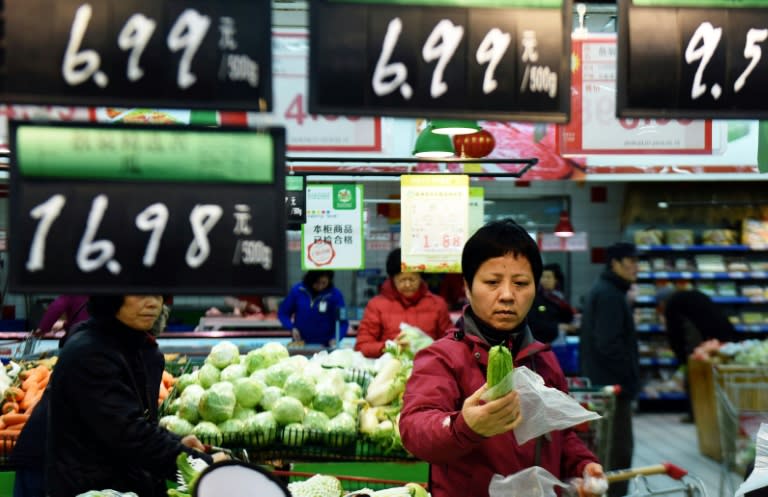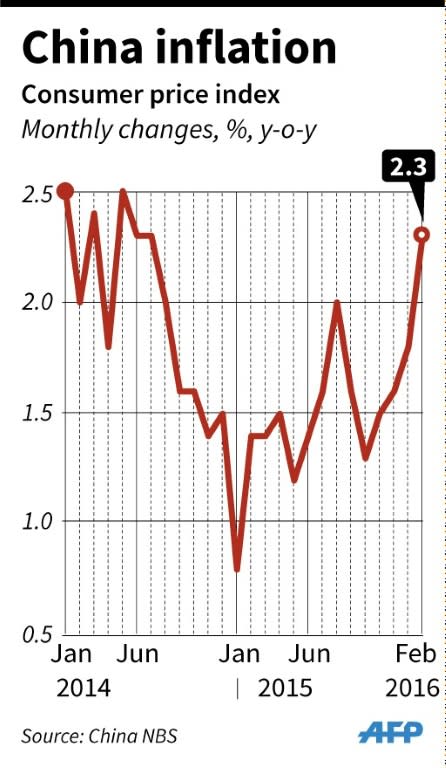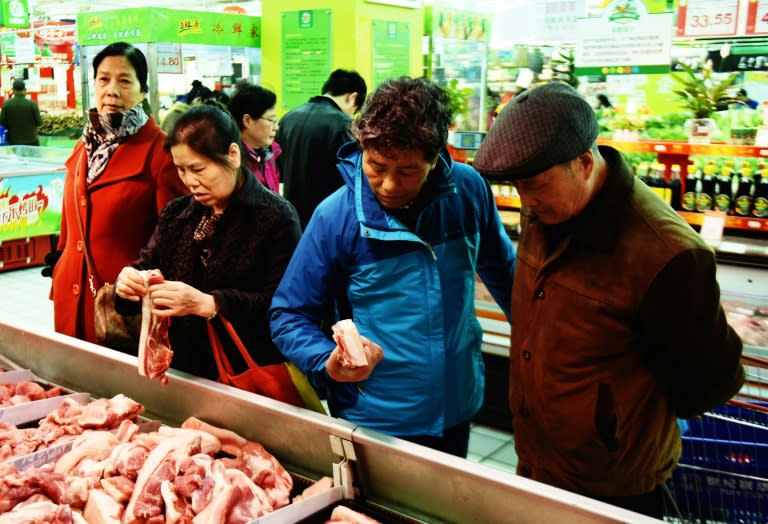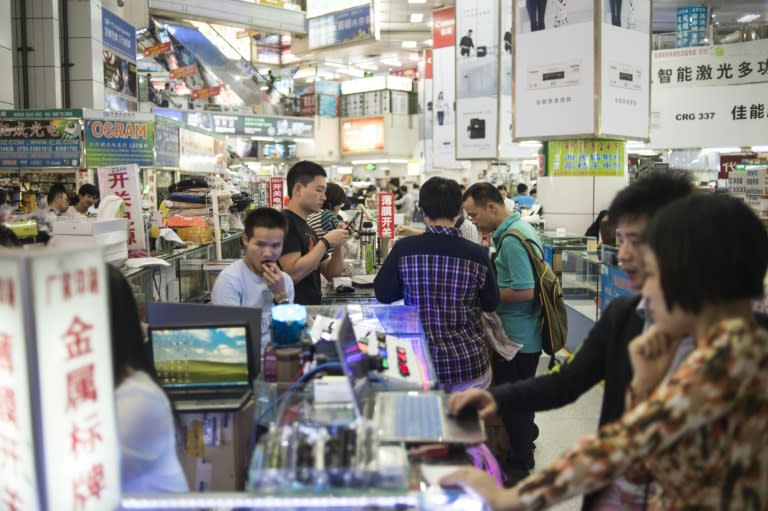China consumer inflation jumps in February
China's consumer inflation jumped to 2.3 percent in February, its highest in nearly two years, official data showed Thursday, in a positive sign for demand in the world's second-largest economy. Food prices surged during the annual Lunar New Year holiday, with pork prices jumping 25.4 percent year-on-year, and vegetables up a hefty 30.6 percent. The rise in the consumer price index (CPI) released by the National Bureau of Statistics was the largest since July 2014, and came in ahead of market forecasts of 1.8 percent in a survey by Bloomberg News. The producer price index (PPI), which measures prices of goods at the factory gate, fell 4.9 percent year-on-year, meeting expectations and an improvement on January's 5.3 percent drop. But it was the 48th consecutive monthly fall as overcapacity in manufacturing drags on China's growth, with the protracted PPI declines -- now extending to four years -- boding ill for industrial prospects. Moderate inflation can be a boon to consumption as it pushes buyers to act before prices go up, while falling prices encourage shoppers to delay purchases and companies to put off investment, both of which can hurt growth. Analysts expected a rise in CPI due to a traditional surge in demand for the week-long holiday, known as the Spring Festival in China, as well as unusually cold winter weather in February pushing up food prices. The increase was "mainly impacted by the cold snap and the Spring Festival", National Bureau of Statistics analyst Yu Qiumei said in a statement. "Most of the country was hit by wind storms, a temperature drop, rain and snow storms in the middle of February, affecting the production and transportation of fresh vegetables," Yu said, adding that vegetable prices surged 29.9 percent from January, the highest monthly rise since March 2008. Analysts with ANZ Research noted that the spike in food prices was temporary, so that consumer inflation was likely to be "mild" in coming months. As the inflation rate was "significantly below the government's three percent target", they added, the central bank "will need to inject more liquidity to the real economy". Beijing lowered its growth target last week at the annual meeting of the rubber-stamp National People's Congress, setting a target of 6.5 to 7.0 percent expansion for 2016, down from "around seven percent" last year. - Holiday haircuts - The inflation figures are a glimmer of good news for China's economy, which saw its slowest growth rate in a quarter of a century last year. The slowdown comes as Beijing strives to effect a difficult transition in the country's economic model away from reliance on exports and fixed-asset investment towards one driven by consumers. Officials have been on a charm offensive to reassure investors they have ample monetary and policy tools to maintain growth while making much-needed overcapacity cuts. Worries about the outlook still weighed on markets Thursday -- auto sales edged lower year-on-year in February, figures showed -- and the benchmark Shanghai Composite Index closed down more than two percent. "If inflation pressure doesn't ease, the space for use of monetary policy will be limited," Hong Hao, an analyst at BOCOM International told AFP. But Nomura analyst Zhao Yang said the inflation figures did not "limit room for further monetary easing". He added that PPI weakness suggested "industrial growth momentum is softening". Nevertheless, Julian Evans-Pritchard of Capital Economics said that because most of the PPI index was made up of industrial inputs, much of its decline could be attributed to depressed global commodity prices. They "should actually benefit" many firms, he said, since Chinese companies will enjoy lower costs "with the price of domestic goods holding up better". Transport and tourism prices also went up by large margins, lifted by the flood of workers heading home for the holidays, often called the largest annual human migration in the world. Resulting staff shortages contributed to upward price pressure in some sectors, Yu said. Car repair and hair dressing prices rose 6.9 percent and 5.7 percent respectively from a month ago.





